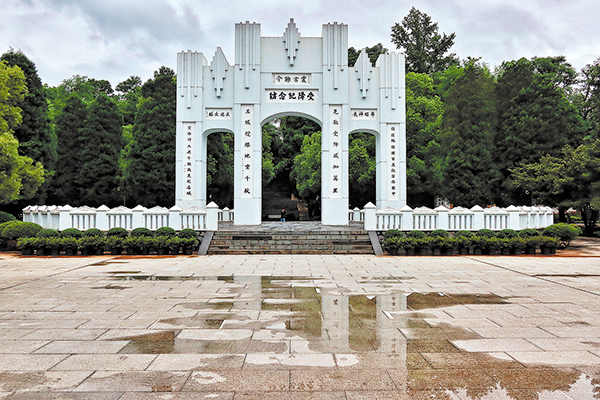Victory etched in time
A memorial complex is upgrading its displays for a better understanding of the War of Resistance Against Japanese Aggression on its 80th anniversary, Wang Ru reports in Huaihua, Hunan.


A small county as it is, Zhijiang Dong autonomous county in Huaihua, Hunan province was witness to a glorious moment in history, when it was chosen as the place to receive Japan's surrender in the Chinese People's War of Resistance Against Japanese Aggression (1931-45) in 1945.
Today, the memory of that historic event remains vivid, with people honoring the occasion by erecting memorial structures. As the country marks the 80th anniversary of the victory this year, renewed focus has been directed toward the Zhijiang site to upgrade its displays and facilities, so as to tell a compelling tale of the victory story and remind people how hard-won peace is.
Eight decades ago, after the Japanese government announced an unconditional surrender, its delegates were required by the Chinese to fly to Zhijiang to discuss the specifics, including the disarmament of the Japanese forces, treatment of war prisoners and terms outlined in the agreement.
"It was no accident that Zhijiang was endowed with such a historical responsibility," says Wu Jianhong, 59, director of the Memorial Hall of the Victory of the Chinese People in the War of Resistance Against Japanese Aggression and the Acceptance of Japan's Surrender in Zhijiang. "It has a remarkable location as it is the gateway from China's Central Plains to southwestern provinces. Therefore, Zhijiang has great military importance since ancient times," says Wu.
Before Japan's surrender, Zhijiang had a strong military presence with many institutes stationed there, including more than 6,000 Flying Tigers (American volunteer pilots who fought in the Chinese Air Force between 1941 and 1942. They played a vital role in countering Japanese forces in China). It also had one of the largest military airports of the allied forces in East Asia, deterring Japanese army and ensuring the safety of the surrender ceremony, Wu adds.
In Zhijiang, they inked a memorandum on the discussed issues on August 21, but it was decided that the signing would be moved to Nanjing, Jiangsu province, the then China's capital, on Sept 9.
Starting from Zhijiang, surrender ceremonies were held in 16 theaters across the country and in northern Vietnam. "By the end of 1945, Japanese invaders in China were all disarmed, marking the first complete victory of Chinese people in their resistance against foreign invasions for more than a century," says Wu.




































